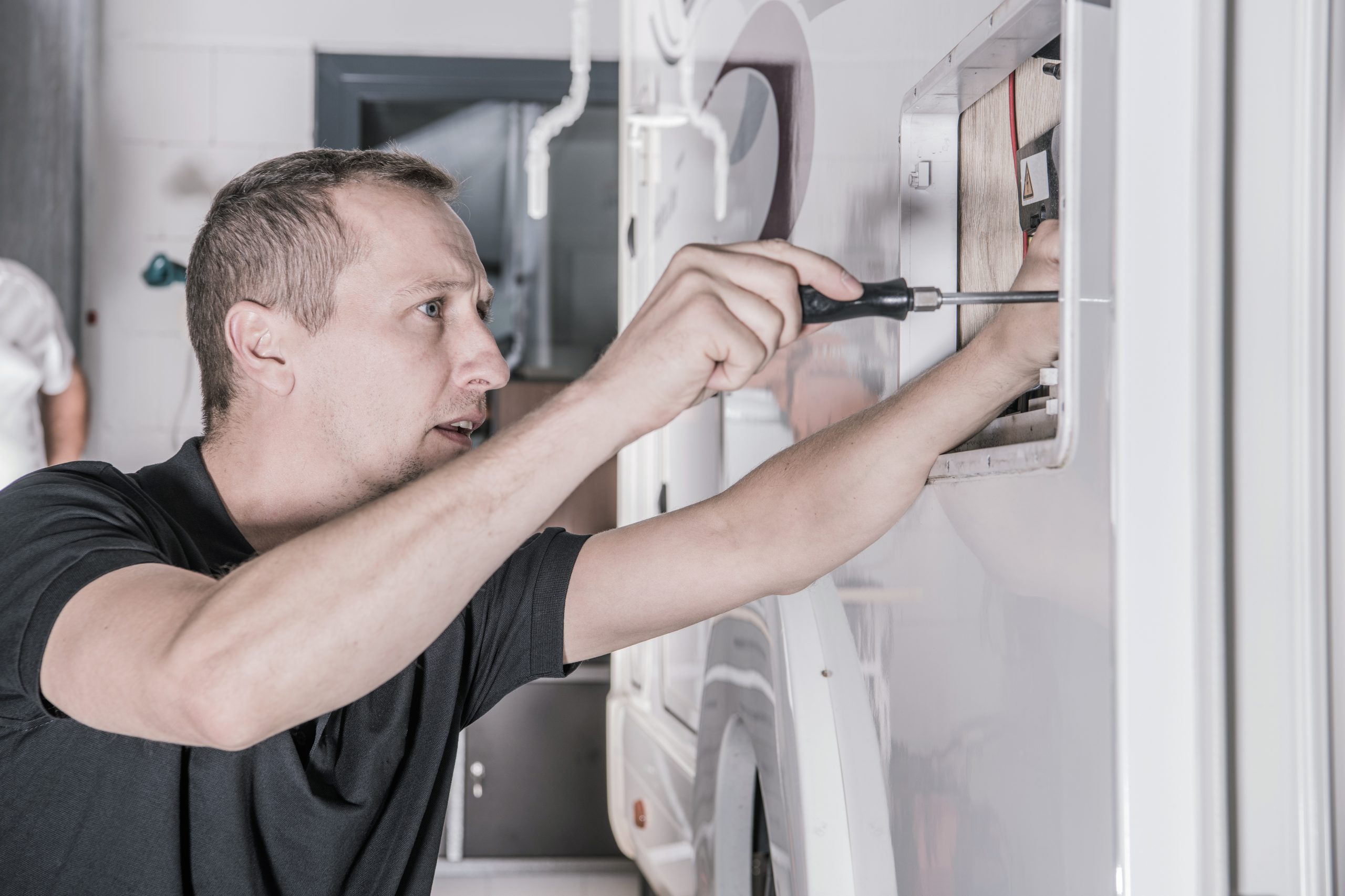The ability to store, cool and cook your own food is a critical part of any RV experience. However, getting the right refrigerator for your rig is a big decision.
Whether you opt for propane, electric or absorption, your refrigerator is going to be working hard. So let’s take a closer look at how it works!
Propane
The most popular type of RV refrigerator is the absorption fridge. These are different from compressor-driven refrigerators because they do not require an external power source to cool the food. Absorption fridges can run on AC, LP gas, or propane. They have a pilot light that heats up a boiling chamber filled with water and ammonia. As the heat boils the chemicals, it changes them into a vapor that travels to an evaporator coil to cool the fridge. The vapor then returns to the absorber, where the ammonia and hydrogen mix together, and the process starts again.
Unlike compressor-driven fridges, the absorption process takes longer to cool the food. It can take up to 24 hours for the refrigerator to reach its ideal temperature. Adding ice packs and keeping it closed can speed up the process. Also, making sure your camper is level can help the absorption system work better. If your camper isn’t level, the flame on the pilot may not be contacting the boiler as directly. This can prevent the chemicals from boiling as quickly and cooling down the refrigerator.
Electric
When you want to run your RV fridge on electricity, you will need a combination of 12-volt direct current (DC) to operate the controls and either propane or 120-volt alternating current power from the generator. To start up a large refrigerator, upwards of 1,000 watts can be required. Once the refrigerator is running, it typically consumes under 300 watts and a few amps to remain cool.
When defrosting, the refrigerator may use under 100 watts during the programmed process.
Your refrigerator’s wattage will depend on the size, age, model and mode or source of electricity or propane. Knowing its wattage will help you to plan and forecast how much propane or DC battery power you will need while camping.
Absorption
Before compressor fridges became more popular, many RVs used absorption refrigerators. These work by converting heat to cold through a chemical process. They use water, ammonia, and hydrogen gas to create the coolness they need. This is a great method of refrigeration when the ambient temperature is below freezing, but it can be less effective in hotter temperatures.
Propane is the best power source for an absorption refrigerator because it can supply the most heat to get the cooling process going quickly. However, it is not as efficient a way to run the refrigerator as 120V AC power.
Another thing to keep in mind about absorption refrigerators is that they require a relatively level RV to work properly. This is a problem for those who often camp in state or national parks and boondocking where level spaces are hard to come by. The system works on the principle that hot gases rise and liquids fall, so the fridge needs to be close to even for it to operate.
Storage
RV fridges have a few special features that make them unique from refrigerators in our homes. They are smaller to fit in the space, they can run on different power sources and they have latching doors.
Most RV fridges use a process called absorption to cool. This involves a boiler that heats up a combination of water and ammonia. Then the ammonia gas vaporizes and drips into the refrigerated area where it cools everything down.
Make sure you let your fridge and freezer completely cool down before you put food in them while traveling. This helps the fridge and freezer conserve energy. It’s also important to make sure that the fridge and freezer are properly stored when not in use. Hanging a clean dry towel over each door will help prevent moisture from forming in the fridge or freezer. This also prevents accidental closing of the door. You should also be mindful of where you park your RV – RV fridges need to be level for the magic absorption stuff to work.rv refrigeration

